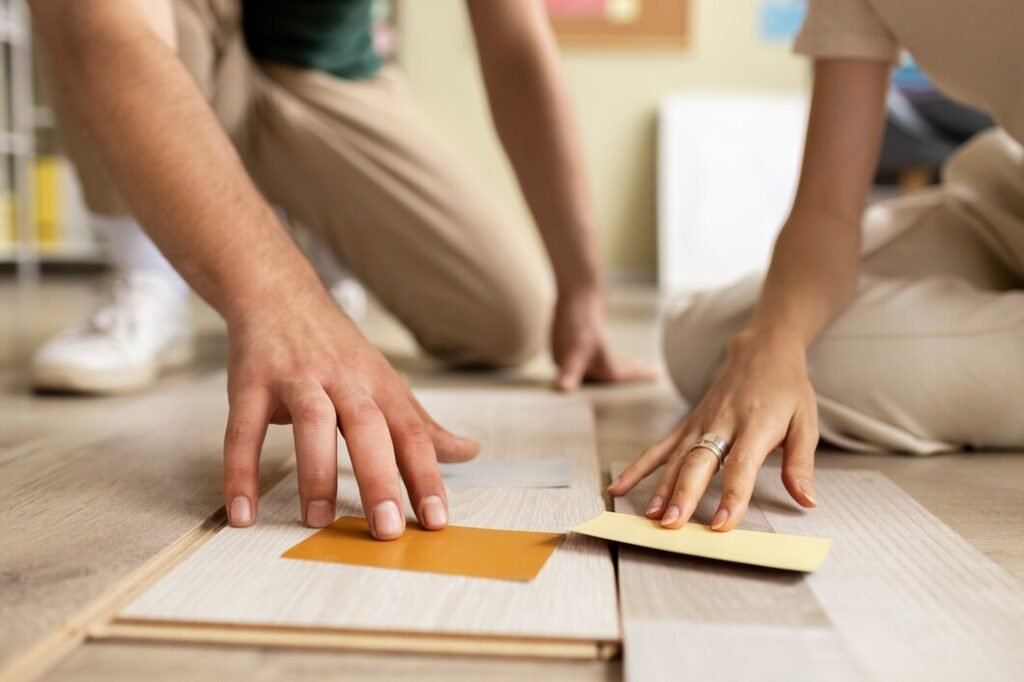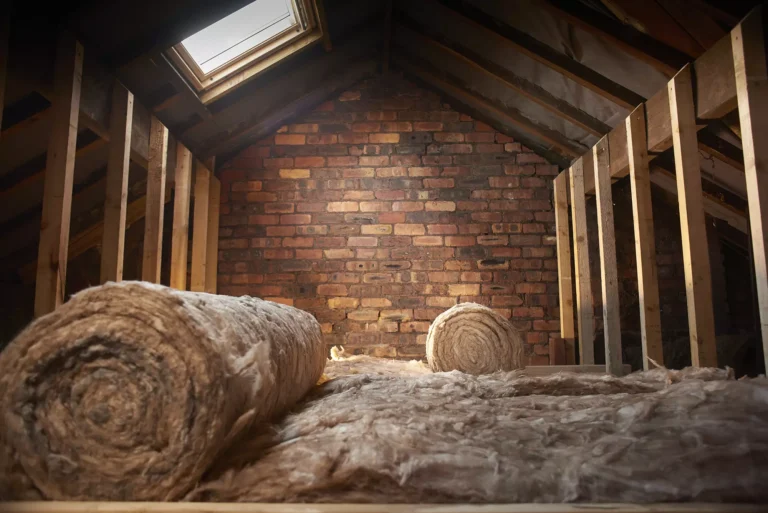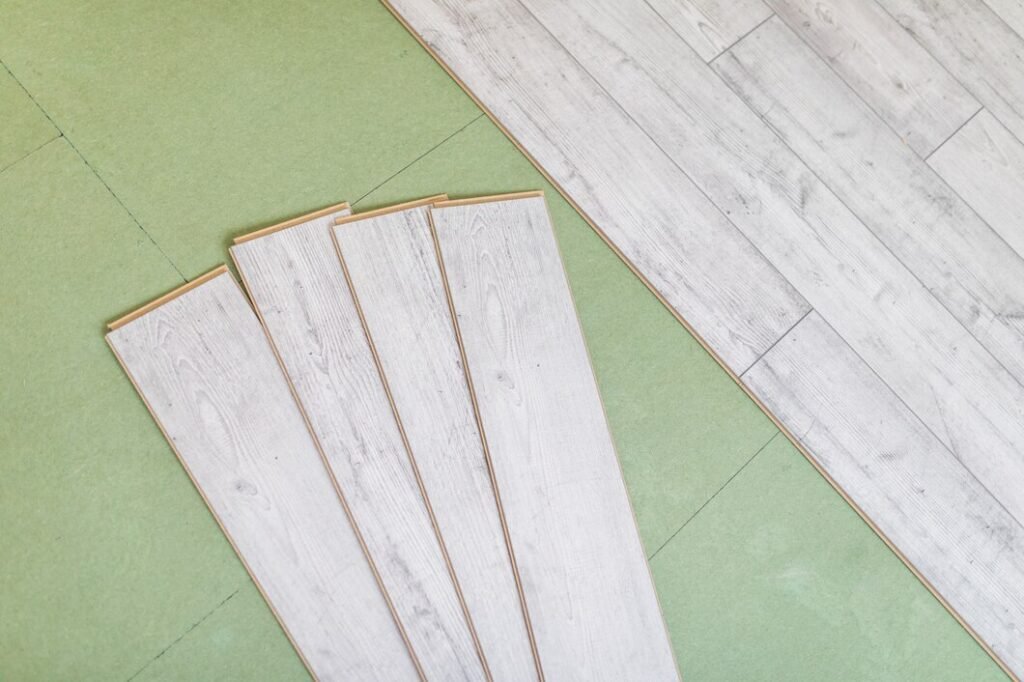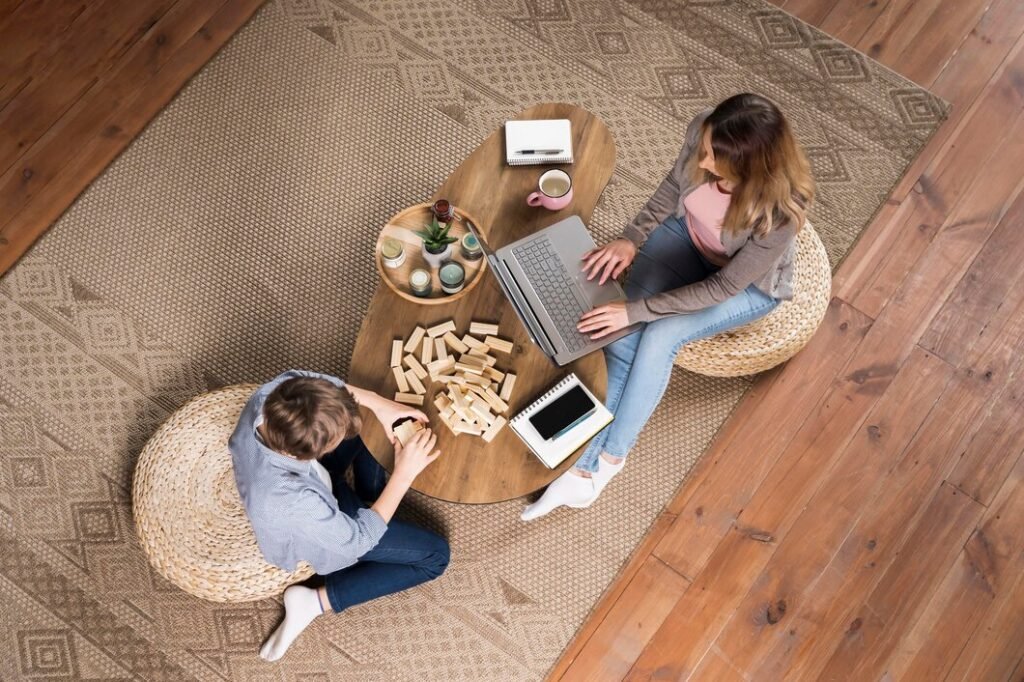Blog
The Benefits of Eco-Friendly Flooring Materials
Top Eco-Friendly Flooring Options for Sustainable Homes
Eco-friendly flooring is becoming a popular choice for homeowners who prioritize sustainability. Several options provide durability, aesthetic appeal, and environmental benefits:
- Bamboo Flooring – Rapidly renewable, durable, and stylish. Bamboo is a fast-growing grass that matures in just a few years, making it a highly sustainable option. It has a hardness comparable to traditional hardwoods, ensuring longevity in high-traffic areas.
- Cork Flooring – Naturally antimicrobial, soft underfoot, and sourced from sustainable cork oak trees. Harvesting cork does not harm the tree, allowing it to regenerate naturally. It provides excellent thermal and acoustic insulation, making homes quieter and more energy-efficient.
- Reclaimed Wood – Salvaged from old structures, reducing deforestation. Reclaimed wood brings a unique rustic charm while repurposing existing materials, preventing the need for new tree harvesting. Each plank tells a story with its natural patina and character.
- Linoleum – Made from natural materials like linseed oil, wood flour, and jute backing. Unlike vinyl, linoleum is biodegradable and emits low VOCs (volatile organic compounds), ensuring healthier indoor air quality.
- Recycled Rubber Flooring – Made from old tires, offering resilience and sound absorption. It’s particularly useful in gyms, play areas, and high-traffic spaces due to its shock-absorbing properties and slip resistance.
- Concrete Flooring – Low-maintenance and long-lasting, reducing material waste. Concrete can be polished, stained, or stamped for decorative effects while providing a durable and thermally efficient flooring solution.
Each of these materials contributes to a healthier environment and energy-efficient home while offering unique textures and styles to suit various interior designs.

Why Choose Sustainable Flooring Materials for Your Home
Switching to sustainable flooring provides long-term advantages:
- Reduces Carbon Footprint – Uses renewable or recycled materials that require fewer resources for production. Sustainable flooring options, such as bamboo and cork, grow rapidly and can be harvested without causing long-term environmental damage.
- Improves Indoor Air Quality – Free from harmful VOCs and toxic chemicals. Many conventional flooring options, such as vinyl, emit VOCs that contribute to indoor air pollution. Sustainable alternatives help create a cleaner and healthier living space.
- Enhances Home Value – Buyers prioritize eco-conscious homes. Installing sustainable flooring can be an attractive feature for potential buyers, increasing resale value and marketability.
- Durability & Longevity – Lasts longer, reducing replacement needs. Many eco-friendly flooring options, such as concrete and reclaimed wood, offer superior durability and require minimal maintenance, making them a cost-effective choice in the long run.
- Supports Ethical Manufacturing – Promotes sustainable harvesting and fair trade practices. By choosing certified eco-friendly flooring brands, homeowners can ensure they support responsible production methods that prioritize both environmental and social welfare.
Sustainable flooring isn’t just an environmental decision but also an investment in healthier living spaces and financial savings over time.
Environmental Advantages of Green Flooring Choices
Green flooring choices significantly reduce environmental impact:
- Conserves Natural Resources – Uses materials that regenerate quickly, such as bamboo and cork, which can be harvested without harming the ecosystem. Reclaimed wood also helps reduce the demand for virgin timber.
- Minimizes Waste – Reduces landfill contributions by repurposing materials. Recycled rubber flooring and reclaimed wood are excellent examples of how old materials can be given a second life, reducing overall waste production.
- Lower Energy Consumption – Production requires less energy compared to traditional flooring. Many sustainable flooring materials are processed using less water, energy, and chemicals, leading to a smaller environmental footprint.
- Reduces Deforestation – Bamboo, cork, and reclaimed wood prevent unnecessary tree cutting. Sustainable forestry practices help maintain biodiversity and prevent habitat destruction.
- Recyclability – Many materials can be reused or repurposed at the end of their life cycle. For example, cork flooring can be ground down and used for insulation or soundproofing applications.
By choosing eco-friendly flooring, homeowners contribute to a more sustainable world while maintaining functional and aesthetically pleasing interiors.

How Eco-Friendly Flooring Enhances Indoor Air Quality
The type of flooring you choose directly affects the air quality in your home:
- Reduces VOC Emissions – Many traditional flooring materials release volatile organic compounds (VOCs) that contribute to indoor air pollution. Eco-friendly options like cork, bamboo, and linoleum emit fewer or no harmful chemicals.
- Resists Mold and Allergens – Natural materials such as cork and linoleum have antimicrobial properties that prevent mold and mildew growth, creating a healthier living environment.
- Promotes Better Humidity Control – Certain materials like bamboo and cork help regulate indoor humidity, preventing excess moisture that can lead to respiratory issues.
- Contains No Harmful Adhesives – Sustainable flooring options often use non-toxic adhesives, further reducing exposure to pollutants and improving overall indoor air quality.
A healthier home starts with the right materials, and eco-friendly flooring options provide a safer and cleaner indoor environment.
Cost-Effectiveness of Sustainable Flooring Solutions
Although some eco-friendly flooring materials may have higher initial costs, they offer financial benefits in the long run:
- Lower Maintenance Costs – Sustainable materials like concrete, bamboo, and cork require minimal upkeep, reducing long-term maintenance expenses.
- Longer Lifespan – Eco-friendly flooring options tend to be more durable, decreasing the need for frequent replacements.
- Energy Efficiency Benefits – Some materials, such as cork and concrete, provide insulation properties that reduce heating and cooling costs.
- Increases Property Value – Homes with sustainable features are more attractive to buyers, potentially increasing resale value and return on investment.
While the upfront investment in eco-friendly flooring might be slightly higher, the long-term savings and environmental benefits make it a wise financial decision.
The Role of Certifications in Choosing Eco-Friendly Flooring
- Look for LEED and FSC Certifications – Ensure materials meet environmental and sustainability standards.
- CARB Compliance – Reduces harmful formaldehyde emissions for better indoor air quality.
- GreenGuard Certification – Guarantees low chemical emissions and a healthier home environment.
Maintenance Tips for Sustainable Flooring
- Use Non-Toxic Cleaners – Avoid harsh chemicals that can degrade natural materials.
- Regular Sweeping & Mopping – Keeps the flooring clean and extends its lifespan.
- Apply Protective Coatings – Enhances durability and maintains aesthetic appeal.
Comparing Eco-Friendly Flooring vs. Traditional Flooring
- Sustainability – Eco-friendly options regenerate quickly, unlike traditional hardwood.
- Indoor Air Quality – Green flooring emits fewer VOCs compared to vinyl and carpet.
- Cost Considerations – While some sustainable options cost more upfront, they save money in maintenance and longevity.
The Best Rooms for Different Eco-Friendly Flooring Types
- Kitchen & Bathroom – Cork and linoleum resist moisture and provide comfort.
- Living Room – Bamboo and reclaimed wood add elegance and durability.
- Gym & Play Areas – Recycled rubber offers cushioning and slip resistance.
Future Trends in Sustainable Flooring
- Smart Flooring Technology – Innovations in energy-efficient and recyclable materials.
- Biodegradable Flooring – New materials that completely decompose without waste.
- Waterproof Eco-Friendly Options – Sustainable flooring solutions that resist moisture damage.
more insights

Is There Asbestos in Your Loft? What to Know Before Insulation Removal
If your home was built before the 1990s, there’s a chance that your loft insulation could contain asbestos—a hidden danger

Best Heat Pumps for Cold Climates in Canada: Top Picks for 2025
Canadian winters are no joke, and heating your home efficiently is more important than ever. In 2025, cold climate heat

Top 5 Signs Your Basement Needs New Basement Insulation (and What to Do About It)
Your basement plays a huge role in your home’s comfort, energy efficiency, and even air quality—but only if it’s properly

